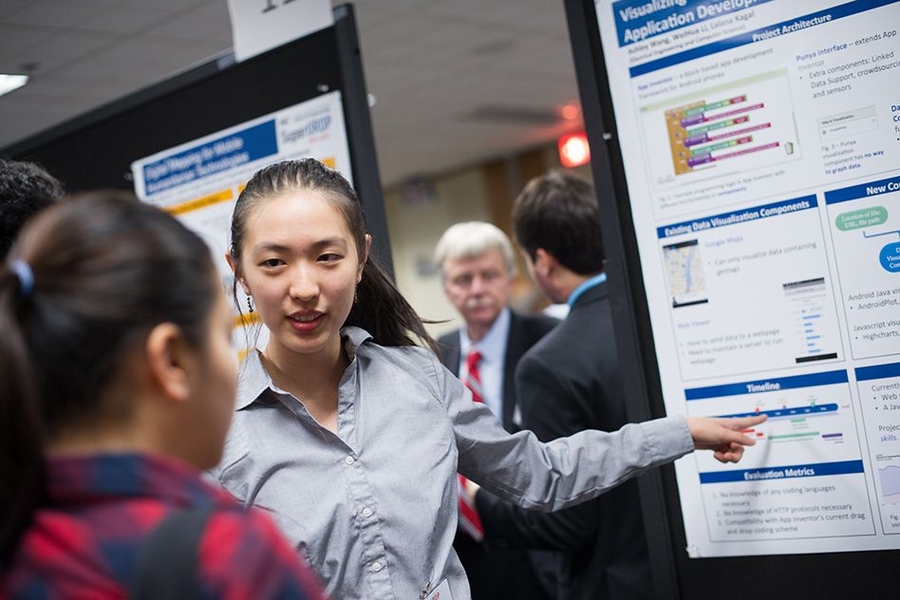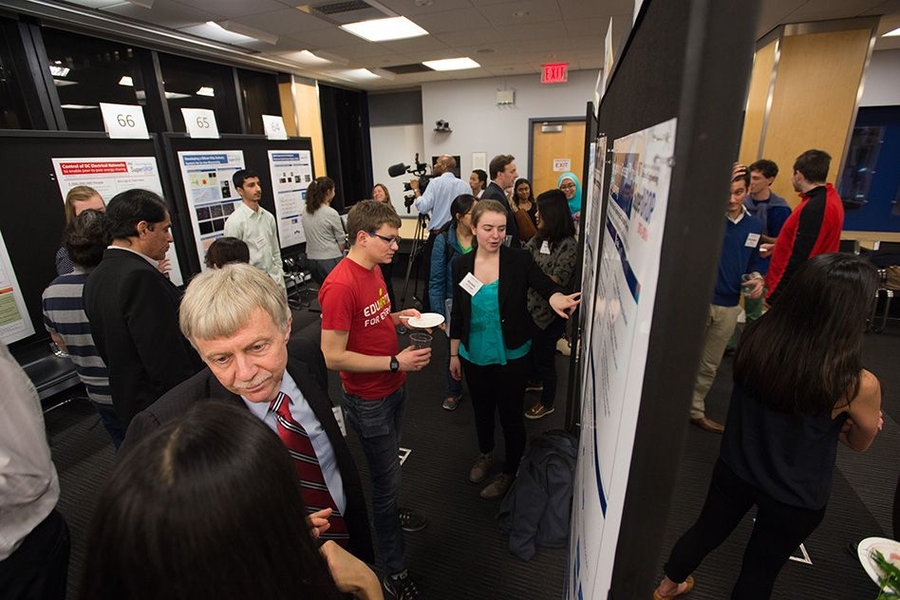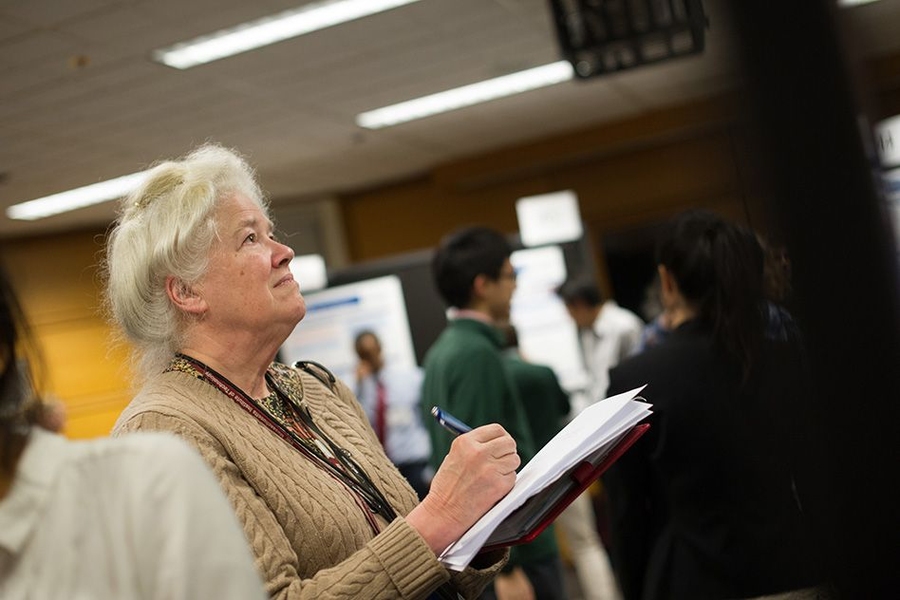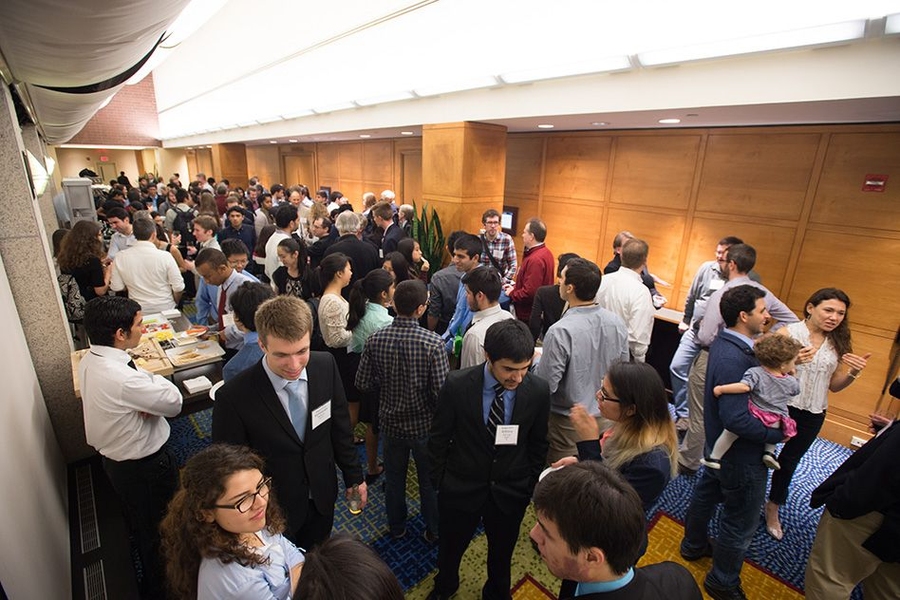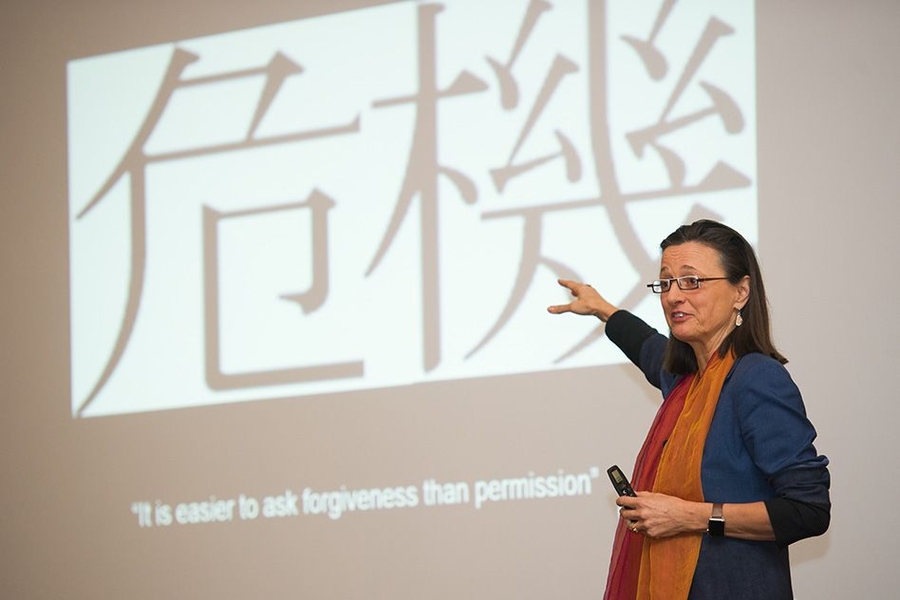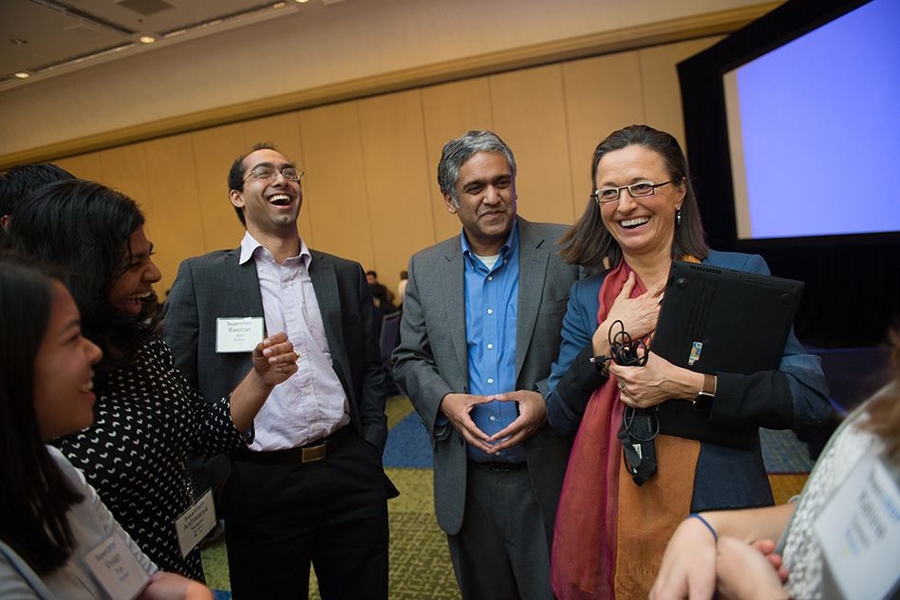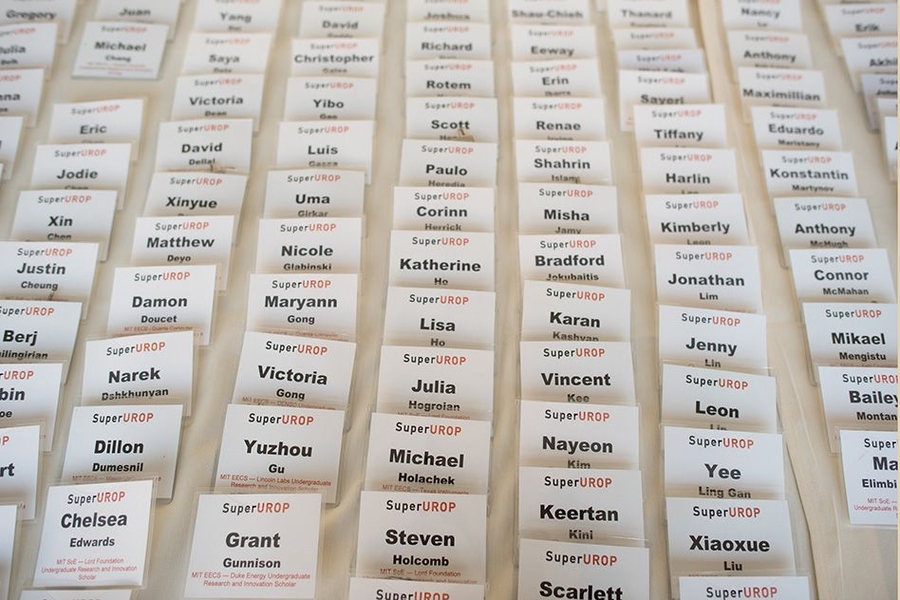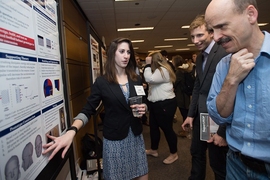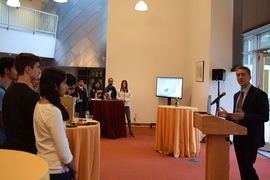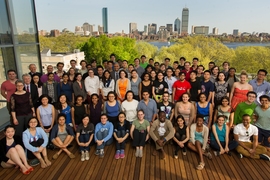From developing smart 3-D scanners, to refining desalination techniques, to designing football helmets that can prevent concussions — undergraduates across the School of Engineering are midway through the year-long research projects that are part of the Advanced Undergraduate Research Opportunities Program, or SuperUROP.
Students participating in the now school-wide program, which was launched in 2012 in the Department of Electrical Engineering and Computer Science (EECS), are immersed in a graduate-level research experience. Taking a deep dive into a single problem, participants work under the supervision of an MIT faculty member or researcher, and their projects often lead to published research or a prototype.
“Engaging in research gives our undergraduates the confidence to push boundaries and solve problems that no one has ever solved before — and that’s the very definition of research,” says Ian Waitz, dean of the School of Engineering. “The skills that students gain from SuperUROP and other research-based programs continue to impact their lives well after research is finished.”
Tackling the hard problems
The 177 students enrolled in SuperUROP are not shying away from hard-hitting problems.
Bradley Walcher is working on a football helmet design to reduce the risk of concussion. Walcher, a junior studying aeronautics and astronautics, notes that concussions are a growing issue for football players — an estimated 15 percent of football players get a concussion every year. The prototype Walcher and his colleagues are developing uses an inverted cushioning structure and 3-D printing to produce a snug fit.
“I took SuperUROP because I want to go to grad school,” Walcher says, “and this has given me the experience of doing higher-level research, which is hard to do as an undergraduate.”
Christian Argenti, a junior studying mechanical engineering, is tackling another health problem, investigating a compression bandage design for treating venous leg ulcers. Currently, health care professionals don’t have a good indication of the pressure being placed on a wound and may thus miss the ideal pressure range for the healing process. Argenti’s potential solution is a bright one: employing polymer-coated fibers that change colors as stretched, indicating the amount of pressure the bandage applies.
He has been working in the Lab for Bio-inspired Photonic Engineering in the Department of Mechanical Engineering for two years and says SuperUROP gave him an opportunity to be immersed in a research setting: “I love SuperUROP because it gave me a bigger project to work on. It really helped me be independent as well as challenging me with projects like the poster session and writing papers.”
In addition to completing the research project, students round out their experience by enrolling in a yearlong course, 6.UAR (Preparation for Undergraduate Research), where assignments include conducting a literature review, writing a journal or conference-style research paper, and presenting a research poster.
Flora Tan, a senior studying computer science, is applying machine learning to financial data — an idea that is just taking hold in the finance sector. Tan’s project uses deep-learning techniques to identify and perhaps predict trends in currency exchange rates such as Bitcoin.
“I’m interested in how technology can disrupt industries like finance, and I’d like to start a company or technology team in the future,” Tan says. “SuperUROP has given me a chance to spend time getting a deep understanding of the technologies being used today.”
An interdisciplinary community of scholars
Expanding SuperUROP to include students from departments across the School of Engineering has already shown great promise, creating community and exposing undergraduates to new fields.
“We hope to create an interdisciplinary community of scholars,” says Anantha Chandrakasan, the Vannevar Bush Professor of Electrical Engineering and Computer Science and EECS department head. “It is amazing to see the enthusiasm and innovative ideas that emerge as they interact with their peers in their own and other areas.”
One of the new departments participating in SuperUROP this year is the Department of Aeronautics and Astronautics (AeroAstro), in which students are working on projects ranging from biometric telemonitoring for astronauts to airfoil-enabled heat exchangers that reduce fuel burn in advanced aeropropulsion systems.
"SuperUROPs are a fantastic opportunity for AeroAstro undergraduates to step ‘outside the box’ and work with industry, faculty, and grad students on exciting, real-world challenges,” said Jaime Peraire, AeroAstro department head and the H.N. Slater Professor Aeronautics and Astronautics.
“When we say, ‘only at MIT,’ SuperUROP is exactly what we are talking about,” adds Waitz. In fact, nearly 90 percent of undergraduate students participate in research during their time at MIT, a hallmark of MIT’s motto, “mens et manus” (“mind and hand”).
“I think that’s profound,” Waitz says. “Our emphasis on research and hard problems exemplifies how we train our engineers, and that has become a magnet for the kinds of fearless students we attract.”
